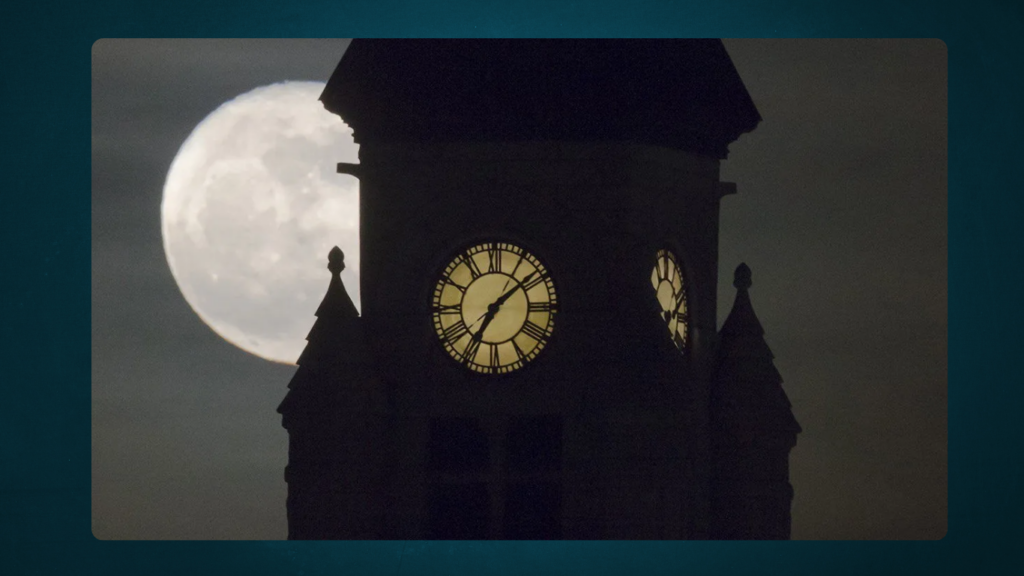In a stunning image taken on December 7, 2022, the Moon was photographed from the International Space Station, orbiting above the southern Indian Ocean, just a day before reaching its Full Moon phase. The Moon, however, is becoming much more than just a celestial wonder—it’s the focal point of a new NASA initiative to establish a Coordinated Lunar Time (LTC) system. This effort, initiated after a directive from the White House in April, will see NASA working closely with U.S. government agencies, international partners, and standards organizations to create a unified time standard for lunar missions.

At the helm of this project is NASA’s Space Communication and Navigation (SCaN) program. The mission aims to introduce a timekeeping system that can not only support lunar exploration but could also be expanded to future missions to Mars and other celestial bodies. The LTC will play a crucial role in ensuring the smooth functioning of future space activities, particularly as NASA’s Artemis program seeks to establish a sustained presence on and around the Moon.
The Need for a Lunar Time Standard
On Earth, time is kept by Coordinated Universal Time (UTC), which is calculated using a global network of atomic clocks. NASA intends to apply a similar approach for the Moon. However, the placement of atomic clocks on the lunar surface is still under review, as the Moon’s lower gravitational field causes time to pass slightly faster than it does on Earth—by microseconds each day. Even though this difference seems minuscule, it can have significant implications in space travel.
For instance, a hummingbird’s wings beat roughly 50 times per second, with each flap lasting about 20,000 microseconds. A difference of 56 microseconds—like the variation seen on the Moon—may sound negligible, but in the realm of space travel, small inaccuracies can lead to large-scale errors. “An object moving at the speed of light could cover the length of 168 football fields in just 56 microseconds,” said Cheryl Gramling, NASA’s lead for lunar navigation and timing. “If someone on Earth doesn’t compensate for this, they could misjudge the position of an astronaut orbiting the Moon by that same distance.”
Ensuring Precision and Scalability
As NASA prepares for long-term lunar exploration through the Artemis program, the need for precise timekeeping becomes critical. Establishing LTC will allow NASA to synchronize operations and prevent minor time differences from jeopardizing missions. This standardized system is designed to be scalable, meaning it can be adapted for use on other planetary bodies such as Mars.
The importance of time standardization grows as the Moon becomes a hub for space activity. “With the commercial space industry expanding and more countries becoming active on the Moon, time standardization is essential for ensuring safe and sustainable operations,” explained Dr. Ben Ashman, navigation lead for lunar relay development at NASA’s SCaN program.
SCaN’s Role in Space Exploration
NASA’s SCaN program serves as the nerve center for over 100 missions, both NASA-led and external, ranging from supporting astronauts aboard the International Space Station to deep space exploration. SCaN operates two major networks—the Near Space Network and the Deep Space Network—both of which provide essential communication and navigation services for missions across the solar system. These networks not only aid in weather monitoring and climate change research but also support lunar and deep space exploration.

By developing a unified lunar time standard, NASA will be able to maintain precise coordination between Earth and Moon-based activities. As more countries and private entities embark on lunar missions, a shared time standard will become increasingly vital to ensuring that operations are safe, resilient, and efficient.
Looking Ahead: A Time Standard for the Solar System
NASA and its partners are currently analyzing mathematical models to determine the best method for implementing LTC on the Moon. This standard will help keep future missions on track and ensure the success of human exploration beyond Earth’s orbit.
The creation of a lunar time standard will not only support near-term lunar missions but will also serve as a stepping stone for future interplanetary exploration. NASA envisions this system as a scalable framework that can extend to Mars and other celestial bodies. LTC isn’t just about synchronizing clocks—it’s about laying the foundation for humanity’s long-term presence in space.
With these innovations, the Moon will serve as a crucial launchpad for missions that take us even deeper into the solar system. Timekeeping may seem like a small piece of the puzzle, but it’s a critical one in ensuring the success of future space exploration.

Subtly charming pop culture geek. Amateur analyst. Freelance tv buff. Coffee lover
